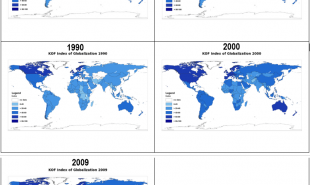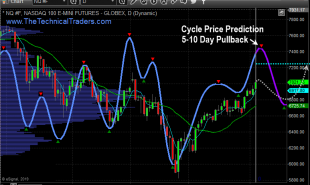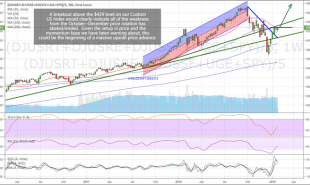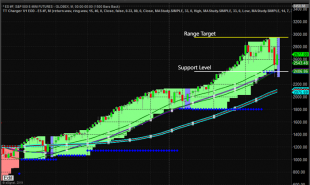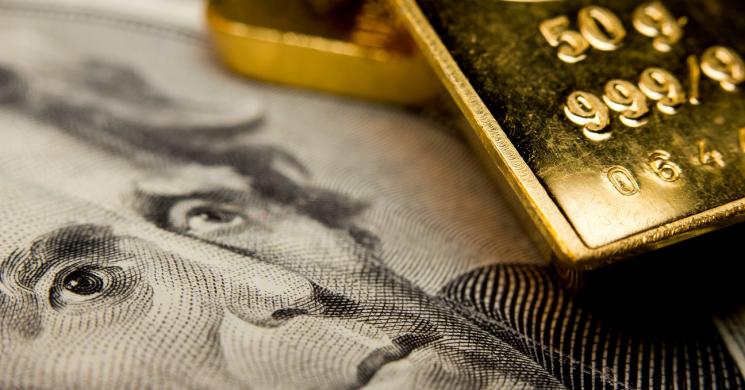
Oct 11, 2017 BARRY EICHENGREEN - provided by Project Syndicate
Pundits have been saying last rites for the dollar’s global dominance since the 1960s – that is, for more than half a century now. But the pundits may finally be right, because the greenback's dominance has been sustained by geopolitical alliances that are now fraying badly.
WASHINGTON, DC – Mark Twain never actually said “Reports of my death have been greatly exaggerated.” But the misquote is too delicious to die a natural death of its own. And nowhere is the idea behind it more relevant than in discussions of the dollar’s international role.
Pundits have been saying last rites for the dollar’s global dominance since the 1960s – that is, for more than a half-century now. The point can be shown by occurrences of the phrase “demise of the dollar” in all English-language publications catalogued by Google.
The frequency of such mentions, adjusted for the number of printed pages per year, first jumped in 1969, following the collapse of the London Gold Pool, an arrangement in which eight central banks cooperated to support the dollar’s peg to gold. Use of the phrase soared in the 1970s, following the collapse of the Bretton Woods system, of which the dollar was the linchpin, and in response to the high inflation that accompanied the presidencies of Richard Nixon, Gerald Ford, and Jimmy Carter in the 1970s.
But even that spike was dwarfed by the increase in mentions and corresponding worries about the dollar starting in 2001, reflecting the shock of the terrorist attacks that September, the mushrooming growth of the US trade deficit, and then the global financial crisis of 2008...
Yet through all of this, the dollar’s international role has endured. As my coauthors and I show in a new book, the share of dollars in the foreign-currency reserves held by central banks and governments worldwide hardly budged in the face of these events. The greenback remains the dominant currency traded in foreign-exchange markets. It is still the unit in which petroleum is priced and traded worldwide, Venezuelan leaders’ complaints about the “tyranny of the dollar” notwithstanding.
To the consternation of many currency traders, the value of the dollar fluctuates widely, as its rise, fall, and recovery in the course of the last year have shown. But this does little to erode the attractiveness of the dollar in international markets.
Central banks still hold US Treasury bonds because the market for them is the single most liquid financial market in the world. And Treasury bonds are secure: the federal government has not fallen into arrears on its debt since the disastrous War of 1812.
In addition, US diplomatic and military links encourage America’s allies to hold dollars. States with their own nuclear weapons hold fewer dollars than countries that depend on the US for their security needs. Being in a military alliance with a reserve-currency-issuing country boosts the share of the partner’s foreign-exchange reserves held in that currency by roughly 30 percentage points. The evidence thus suggests that the share of reserves held in dollars would fall appreciably in the absence of this effect.
This under-appreciated link between geopolitical alliances and international currency choice reflects a combination of factors. Governments have reason to be confident that the reserve-currency country will make servicing debt held by its allies a high priority. In return, those allies, by holding its liabilities, can help to lower the issuer’s borrowing costs.
Here, then, and not in another imbroglio over the federal debt ceiling this coming December, is where the real threat to the dollar’s international dominance lies. As one anonymous US State Department official put it, President Donald Trump “does not seem to care about alliances and therefore does not care about diplomacy.”1
South Korea and Japan are thought to hold about 80% of their international reserves in dollars. One can imagine that the financial behavior of these and other countries would change dramatically, with adverse implications for the dollar’s exchange rate and US borrowing costs, were America’s close military alliances with its allies to fray...
Read more at Project Syndicate
Read more by MarketSlant Editor




